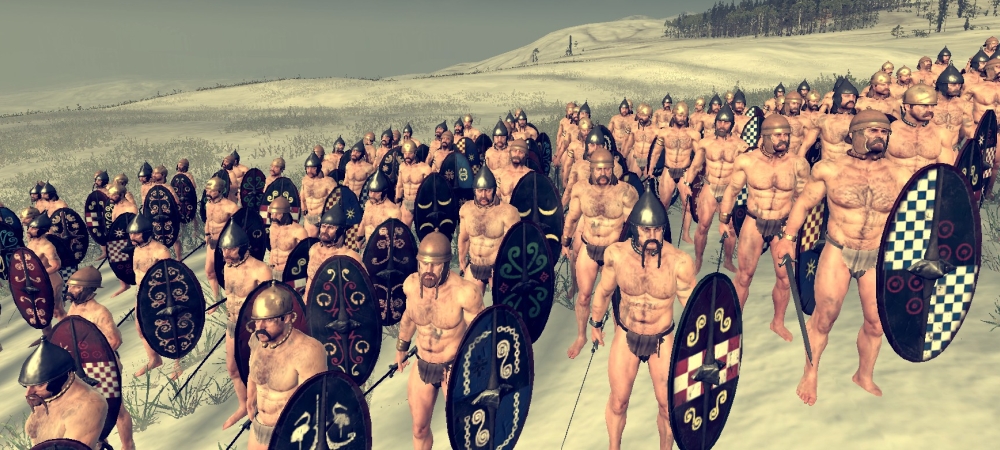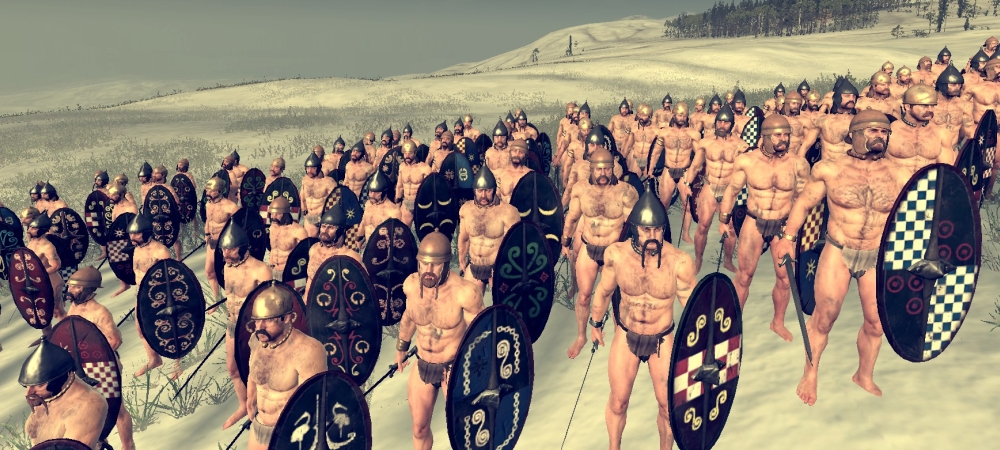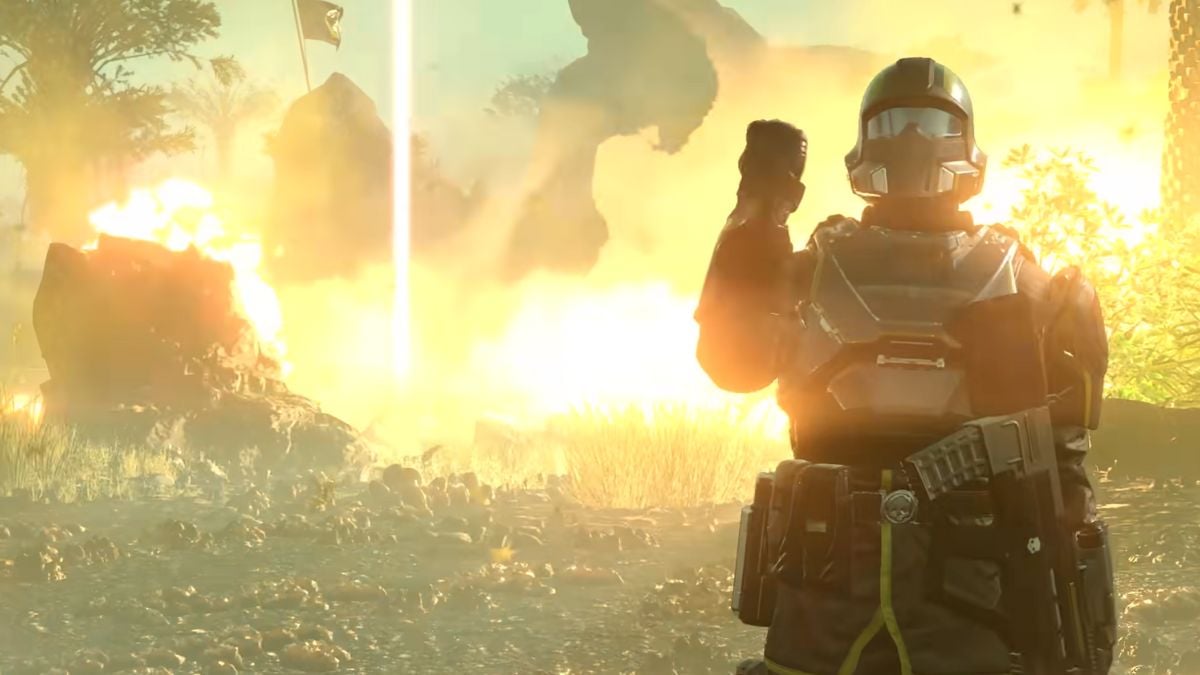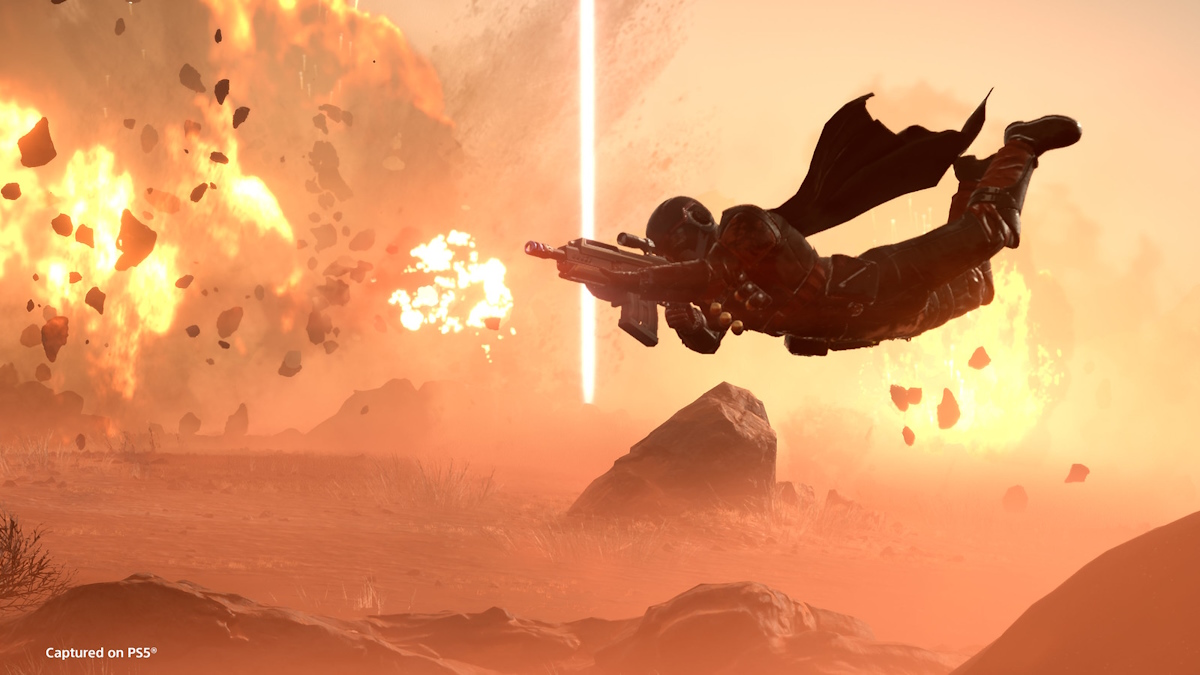Veni, Vidi, Sust?nui
Picture, in your mind’s eye, a testudo.
If you’re up on your Roman history, you’ll know that I’m referring to that ancient Roman formation in which soldiers tightly align their shields to protect themselves from every angle as they advance. Even without the immortalizing effect of Asterix comics, the testudo remains an enduring icon of Roman military power, but it also serves as an apt analogy for the state of Total War: Rome II.
Indeed, the testudo is large, densely-packed, deadly effective, glorious to behold, and in the heat of battle, seemingly unassailable. At the same time, the testudo — and Rome II like it — is slow to move, unwieldy, and when scrutinized closely, reveals a number of vulnerabilities and gaps in the defense.

Total War: Rome II (PC)
Developer: The Creative Assembly
Publisher: Sega
Release: September 3, 2013
MSRP: $59.99
Reviewer’s Rig: Intel Core i7 920 (2.66GHz), 6GB RAM, Nvidia GeForce 560 ti (Min. Specs here)
First off, any Total War fan wondering if The Creative Assembly has made any fundamental changes to the series’ core formula shouldn’t worry: Rome II is as much a Total War game as any that have come before, once again delivering that hybrid of turn-based strategic empire management and real-time tactical army battles that form the basis of the franchise’s identity.
Also being a sequel to the original Rome: Total War, my favorite entry in the series (barring Shogun 2), the game once again allows you to take charge of one of nine major powers (twelve if you pre-ordered) and, by hook or by crook, conquer the known world. Yes, despite the existence of “Cultural” and “Economic” victory conditions, this is no Civilization game. The series is called Total War for a reason, so strictly dovish would-be imperatores need not apply.

Rather than true sea changes, Rome II instead implements many smaller, iterative improvements that streamline some of the longstanding pet peeves that have plagued the series, while layering on new systems to greatly increase the game’s depth and scope. Because the truth of the matter is, despite its name, Rome II is about more than Rome itself.
Instead, Creative Assembly have put together something of a military-minded classical period simulator. The game’s playable (and non-playable) powers range from all over Europe to North Africa and the Near East, covering four broad cultural groupings (Latin, Hellenic, Barbarian, and Eastern). The unit roster is practically a who’s who of iconic warriors from the ancient world. Mid-Republican manipular legions, woad-painted berserkers, Spartan Hoplite phalanxes, Carthaginian war elephants, Egyptian camel cavalry, and more will all crash against each other in large blobs of slaughter on the real-time battlefields. And it helps that Rome II has made getting to those moments of glory comparatively easier, thanks to a host of updates to the UI and an improved approach to strategic management.

In fact, if the last Total War game you played was Rome (or perhaps even Shogun 2), the various changes Creative Assembly has wrought for Rome II expose a potentially uncomfortable truth about the series’ strategic component: That much of it essentially amounts to busywork.
The most significant single change on Rome II’s strategic layer acts to condense the traditional management of conquered and annexed regions by “bundling” groups of regions into “provinces.” For example, the city of Rome herself belongs to the province of Italia, which consists of Rome, along with Neapolis, Velathri, and Ariminum. All four settlements are shown on a single pane, allowing you to manage their building makeup and taxation as a single entity. When every settlement in a region is owned by the same player, special “Edicts” can be enacted to provide ongoing bonuses to things like public order, tax revenue, growth, or other benefits.
Really, the provincial system is a minor tweak, but it does much to streamline the “management creep” that tends to affect these types of sprawling, map-conquest games. Rather than clicking on eight regions separately to issue orders, you’re instead tabbing through two pages on Rome II‘s well-condensed central tab, briefly pausing to bring up a tooltip, or summoning a dense encyclopedia for more detailed mechanical help. Additionally, the system adds new strategic considerations, since provinces can only be managed as a whole if one faction owns every settlement within. You’ll find yourself agonizing over whether to antagonize otherwise peaceful neighbors because their ownership of a settlement prevents you from “completing” some provinces. My apologies to the Carthaginians and Spartans. You were all put to the sword because I wanted to declare Magna Graecia to be one big party for a decade or two.

Other alterations also serve to tighten the experience of mustering and moving armies and fleets. Units can be recruited from anywhere within an owned province, eliminating the old “ant lines” of individual units marching from all across the map to join armies at the front. Moving land forces across water is a snap as well, since armies automatically spawn their own (unarmed) transports when ordered into the drink, and allowing you to say goodbye to the single-ship “mule fleet” of old. A “stance” system allows you to set armies to different postures, aligned for ambushes, defensive forts, or forced marches, giving more dynamism to a typical campaign.
Rome II also takes steps to distance its armies and fleets from being generic by expanding the RPG-like character progression Shogun 2 used on its agents to encompass most aspects of the game. In addition to the traditional level-up process and the acquisition of traits, army and fleet leaders can “equip” members of their household to gain more bonuses, not unlike slotting gems in a socketed Diablo III weapon. Even the armies themselves can gain traits as they fight, developing traditions, history, specializations, and even unique capacities. Oh, and they also get their own semi-random names (which can be customized at your discretion).
The result is an ancient world that feels simultaneously sprawling and intimate. The whole map is open to you, to conquer with the aid of your most trusted subordinates, and your most decorated and venerable Legions. The feeling of emergent “story generation” feels almost like XCOM, except on the scale of armies rather than squads and individuals.

This all sounds wondrous on paper, but in execution, Rome II’s attempts to breath more life into conquest feel a bit too prosaic for their own good. Most traits, household items, and skills convey limp mathematical benefits rather than the dramatic differences their flavor text and stylized iconography imply.
Creative Assembly’s attempt to simulate the perils of classical politics also falls flat, thanks to an utterly opaque “Faction” system. Replacing the family tree of Shogun 2, the faction system attempts to replicate the wheeling, dealing, and influence trading on the Senate floor (or royal court, if your faction’s a monarchy). It’s an intriguing idea, but I’ll be damned if I can get it to do something I understand.
In theory, you should be watching out for overly ambitious generals and admirals, walking the thin line between celebrating their accomplishments and checking their rebellious tendencies. In theory, this would also be the system through which a Roman Republic might become a Roman Empire (and vice-versa). But in practice, the results of your manipulations feel insubstantial, or even contradictory, such as when some political gambits deliver the opposite result from the one predicted by the game’s tooltips.
The same vagueness affects diplomatic dealings with other factions. Though the game surfaces more information than ever about how exactly your faction influences a neighbor or rival, little of it ends up being of use to bend towards practical results, like trade agreements, alliances, or vassalage.

Thankfully, the complexities and missed opportunities of the strategic layer haven’t quite dampened Rome II‘s bloody-minded other half: Its real-time tactical battles. “More” is the operative word to describe what Creative Assembly has added. Rome II has more units, larger maps, more details, more particle effects, and most importantly, more approaches to the totality of ancient warfare. That totality now includes the most heavily advertised addition to Rome II‘s battles: Amphibious attacks. Now friendly fleets can assist ground-pounders by landing troops onshore in real time.
And it all looks stunning, to boot. Even years ago the quality of Shogun 2 seemed able to match those of a mid-range shooter, but Rome II ups the ante with complex facial expressions, individualized details, and a new “cinematic camera” that allows for direct control of things like siege equipment, for that extra bit of drama.
The game’s AI — always a point of contention for players — has received an upgrade, but perhaps not one as substantial as is needed to truly satisfy series veterans. Though I’m rather incompetent when it comes to most games of this type, even I could tell that the AI has grown more reactive, but also increased in stubbornness, almost to the point of passivity. It’s less vulnerable to being baited out of formation (though it can still be done), but seemed less likely to take advantage of opportunities. At one point the AI was reticent enough to simply wait and let me make the first move … during a siege assault it started. Strategically, the AI had a tendency to throw tiny armies at my massive forces without a hope of winning, particularly once I had taken their last province. These kamikaze-like attacks were rarely disruptive to the play experience, but did lead to me clicking “autoresolve” more often than was necessary.

But alas, dear reader, the fault is not in our stars, nor in ourselves, but in Rome II’s technical state. While it’s not quite in the “half-baked” state some critics asserted at launch, Rome II is about as rough-hewn as a Woad Berserker’s wooden shield, and one worries that between this and Empire, we may have witnessed the limit of Creative Assembly’s ability to execute on its ambitions.
Performance was all over the board for my rig, despite favorable reports from the built-in benchmarking sequence. Perhaps the greatest offender was just how damned long it takes to simply resolve a turn, with the game cycling through dozens and dozens of NPC factions to process their actions. Even with “Show AI Turns” checked off, an early-game turn of Rome II took longer to end than a endgame turn of Shogun 2 at its most crowded. We’re talking on the scale of minutes, in some instances.
The problem is exacerbated, ironically, by the very changes Rome II makes to speed up play. The provincial system and the streamlining of army movement and mustering revealed that much of a pre-Total War: Rome II game consists of “maintenance” actions, but the result is a goodly number of turns, particularly in the early game, are spent simply clicking the “End Turn” button and waiting for the endless scroll of AI processing to pass through again.

Having written that, most of Rome II‘s issues aren’t related to the design of the game, but to glitches and poor optimization. In fact, three major patches have been released to date (and form part of the reason I delayed writing this final review), and significantly improved performance in multiple aspects of the game, including framerate, AI quirks, and even some tweaks designed to slow down the pace of battles in response to player feedback.
All the same, despite the improvements, the patches haven’t quite mitigated the concerns expressed above. But it is easy to imagine a point, perhaps soon, when most, if not all of the kinks have been patched out and the waiting times cut down, leaving players with Total War: Rome II its best: a game that can actually make good on claiming “epic” scale and delivering a truly grand strategic experience coupled with blockbuster production values and satisfying tactical challenges.





